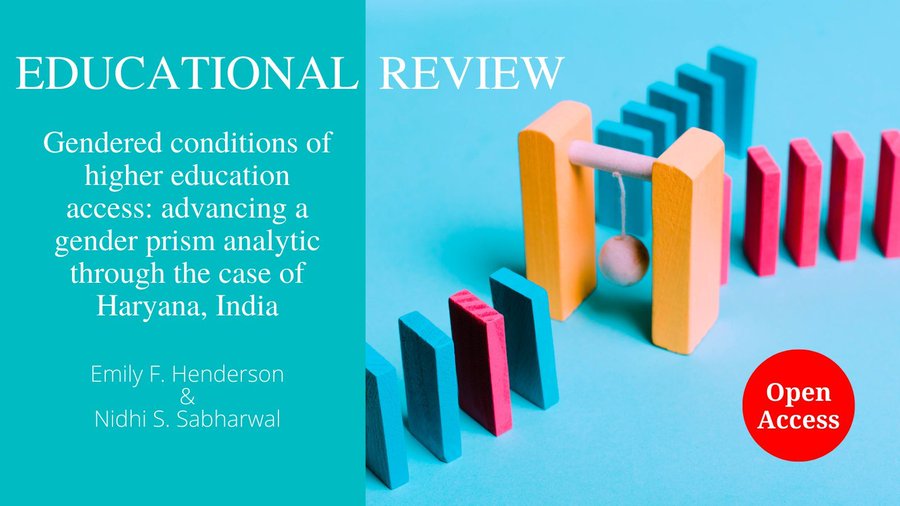News
Gendered conditions of higher education access: advancing a gender prism analytic through the case of Haryana, India
A new research article authored by Dr Henderson and Dr Sabharwal is now available to read. The article, titled "Gendered conditions of higher education access: advancing a gender prism analytic through the case of Haryana, India" argues that a holistic, nuanced analytical framework for analysing gender and access to higher education (HE) would be of great benefit to the field, especially in an era where many country contexts are declaring that gender inequalities in HE access are solved due to the use of the gender parity index (GPI) as a measure of success.
As such, the article proposes a framework to analyse gendered conditions of access to HE, referring to the various ways in which young people of different genders arrive in HE but with different gendered backgrounds behind them and different gendered expectations of their futures ahead of them, even when they were born into the same families and communities. Drawing on feminist sociological and poststructuralist thinking, the proposed framework promotes a refractive perspective to unpack the varied gendered influences that shape young people’s educational trajectories. The article illustrates the framework with the case of the north-Indian state of Haryana, based on an in-depth mixed-methods empirical study of gendered HE access in government colleges. The analysis reveals enduring gendered disparities that are otherwise masked by the use of GPI, including gendered differences in the perceived purpose of HE for young people, which results in differentiated prioritisation of e.g. quality of institution or subject choice. The article aims to provide future studies in this area with a framework that can be applied in and beyond the Indian context.
Published in the journal "Educational Review", this open access article can be found at https://www.tandfonline.com/doi/full/10.1080/00131911.2024.2325066Link opens in a new window

